A few years back I was doing my best to cope with a life that was slowly killing me. I was juggling so many things at once that I felt like I needed antlers on my head to wear properly all the hats I was wearing at once.
I started making time for myself and began going regularly to yoga, which was helpful, but I needed more. One day in class, we were told that the studio would be starting a meditation class. I’d never been particularly good at meditating, but I figured I’d give it another shot.
This time around, I got to begin on the first day of class and the instructor taught different techniques each week. We were encouraged to test out each technique in order to find what was most effective for us. I’d never heard of meditation being taught this way, and it sounded intriguing.
The class was very low-key and the instructor was super laid-back. I felt no pressure, which helped me to better relax. Over a couple of months, I got better and better, and I’d have breakthroughs periodically where I found myself ever so briefly disconnected from and free of my mind. The problem was, that as soon as I realized it, I’d be like “Ooh, cool!” and my mind would take over again as I analyzed the experience.
Trying to Learn to be Present
For those of you who have never meditated, I’m going to try to describe very briefly what it means to separate yourself from your mind and be “present.” (Bear with me for a bit if this isn’t your cup of tea as this is relevant to the story line.) Suffice it to say that this description will be a gross oversimplification. Hopefully, it will provide some frame of reference, be a more accessible definition, and sound a lot less “new-agey” than how it is usually described.
First, we need to understand what the mind is. The mind is a problem-solving, planning, and reflecting mechanism built into each of us. Presumably, it evolved to help us with survival. For example, if you see a lion, your brain tells you that if you take a different path, you may avoid the lion (problem-solving). Your mind may also tell you how to build shelter to protect you at night from lions (planning). Your mind may also think back to previous attempts to build shelter that didn’t work out so well, as your best friend got eaten (reflecting).
The ability to problem-solve, plan, and reflect are very valuable, but our minds have become somewhat OCD now that we are no longer threatened by being eaten alive in our sleep. As a result, our minds tend to make up work for themselves to keep themselves busy. This is a problem, because our awareness is no longer what is currently in front of us (the present). Instead, our minds are focused on tons of “what if” questions such as “What if that person I like asks me out,” or “What if I get fired,” or “What if I made a mistake by giving my child up for adoption”.
We don’t realize it, but this sort of dialogue is constantly happening in our minds. Therefore, we are living in the future, the past, or a combination of both. Living in the future often results in anxiety of the unknown. Living in the past is often full of regret. Both cause us undue stress over things we either cannot change or are unable to predict.
Living in the present moment, means focusing on exactly what is going on around us right now. What sounds do I hear? What scents do I smell? What do I sense by touch and sight?
This may not sound profound, but it is. If you try to stop thinking about one thought - like fighting with your significant other earlier that day, your mind will likely send you on a mental shopping trip to the grocery store to plan what you need to pick up on the way home from work. Stopping this inner chatter, sometimes referred to as “monkey mind” (like a monkey swinging from one branch to the next randomly), is extremely challenging. That’s what you’re up to when you try to meditate.
Like everyone else, I faced this same challenge. Being super ADD certainly did not make it any easier. I try to describe to people what it’s like to be in my head by telling them to imagine themselves shopping for a TV in a big electronics store. When they are standing in front of the wall of TV’s to set each one to a different channel - and then keep up with all of them at the same time. It’s a wonder I ever manage to get anything done.
Trying to quiet every one of those TV’s is a monumental task. While I did get much better at it through practicing meditation, I only experienced silence of my mind for milliseconds, so I only kind-of knew what it was I was trying to do.
Turning 40
Fast forward a couple of months now to my 40th birthday. Turning 40 is a huge milestone for almost everyone. For me, I was quite surprised I had made it that far. In my mind, the only logical way to celebrate such an event was to do something profoundly reckless and downright stupid. This was likely the beginning of my mid-life crisis.
I was explaining my decision to do something reckless and stupid to a friend of mine, but explained that I was having a hard time figuring out what that something should be. He responded by saying that I should jump out of an airplane. Um…yeah no.
My Fear of Falling
I have one very significant fear: falling. I think it must have come from me falling out of my bed the first night my parents put me in a real bed. They did the right thing and had put up side rails to keep me from rolling out. However, being the stubborn kid that I was, I showed them by rolling off the end of the bed and breaking my left collar bone.
To this day, if I feel unsteady and risk falling 4 inches, I get the same kind of adrenaline rush as coming very close to a head-on car crash. To be clear, I have no fear of heights. I have stood on the World Trade Center, been up in the St. Louis Arch, and various other tall structures. I can look straight down without getting at all woozy, so long as I believe I’m stable and not about to fall.
If I get the sensation that I’m falling, my stomach goes up into my throat, my legs turn to jello, and I become very dizzy. This exact thing happened on my first ski trip to the Czech Republic. The guy I was dating at the time was a ski instructor, but refused to teach me. He put me with a friend of his to learn to ski. We had left the lodge and were headed to the lift, which required us to go down a gradual hill. It felt to me like I was falling, and I froze.
Long story short, my boyfriend had to be summoned to come and get me. He had to literally hold my body upright and ski backwards in order to get me down to the lift. Embarrassed doesn’t even come close to describing my shame that day. To me, it seemed like I was falling slowly down the side of the hill.
So, when my friend suggested to me that I should go skydiving for my 40th birthday, it just wasn’t going to happen. No way. No how.
A couple of weeks went by and I contemplated deeply what kind of stupid and reckless thing I could do to celebrate having lived all of four whole decades. No matter what idea came to mind, it paled in comparison to the sheer stupidity of throwing my body towards the earth from 10,000 feet. And so it came to be that I decided I was going to go skydiving.
Skydiving
A little research turned up a small skydiving operation located about an hour and a half away. I arranged to go with two friends in an outdoor adventure group. At least if I died, I’d be in good company.
When the day arrived, we all met at the airfield and signed our lives away on a ton of waiver forms. The unofficial motto of our group was “If it doesn’t require a waiver, it’s probably not worth doing.” I was definitely in good company.
We watched our training video and had some brief instruction on what would happen. We were told that we would scoot up to the door, then we should grab the sides of the plane and hang on while stretching out our right foot to stand on the tiny step outside the door which was about the size of a slice of bread. We would then rock forward and then back. As we came forward again, we were supposed to launch ourselves out of the door. Simple enough.
“Oh, yeah,” they cautioned us. “Most people get tunnel vision on their first jump. It’s normal. Don’t let it worry you. Your vision will return in a few seconds.” Ok. Sure, whatever.
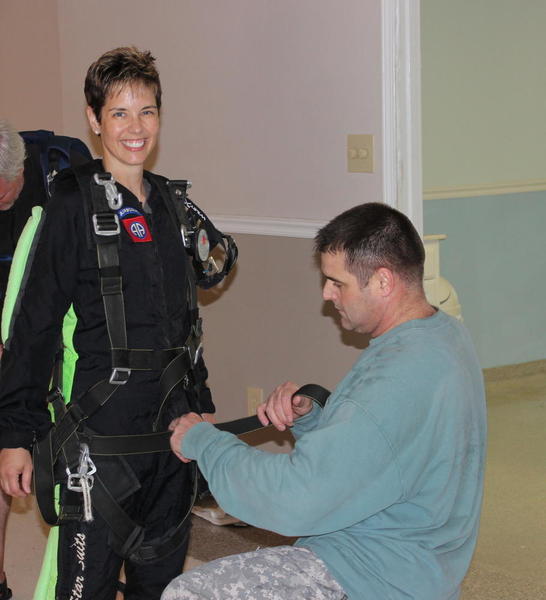
Off we went to be suited up. I watched them packing the parachutes and listened to some other solo jumpers who were discussing the high wind that day. There was a chance that we may have to call it all off.
Since the operation was so small, we each had to go up and jump separately instead of as a group. I drew the short straw and ended up being the third jumper. I had to wait a couple of hours before it was my turn since it took a while for the tiny plane to get to 10,000 feet and the parachutes had to be re-packed in between jumps.
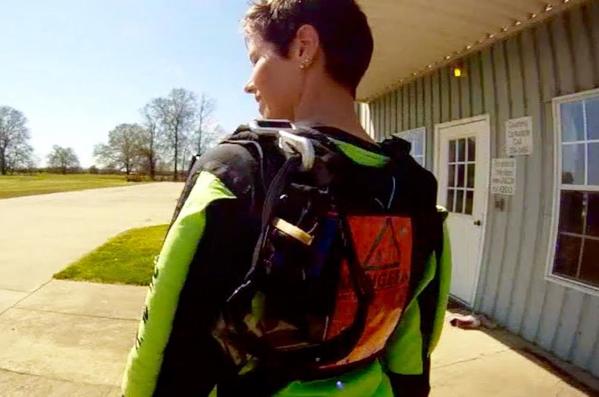 No parachute...just a "Danger" sign
No parachute...just a "Danger" sign
I had plenty of time to be nervous, but I wasn’t. I kept my mind from focusing on the future and tried to focus on the now. I was doing such a good job of it that I thought I must have gotten the whole meditation thing down. No thinking of the future, no anxiety.
My Turn
When my turn finally arrived, the winds had gotten even stronger, but they decided to go ahead with my jump. I was still fine.
On the way to the plane, my instructor had his arm around my shoulder and I leaned over and told him that I would probably never have the nerve to do this a second time, so I wanted it to be wild. I asked if we could flip going out of the plane and if he would swing the parachute really hard like a pendulum so I could feel some G force. He told me that would be fine if I felt up to it. “I want it to be as crazy as it can get,” I told him. “OK”, he said. “Instead of spreading your arms and legs when we come out, tuck and roll.” Sweet! This was going to rock.
We boarded the plane and then all climbed forwards toward the cockpit to help the plane gain lift for takeoff. (Told you it was a really small plane.) Still no fear.
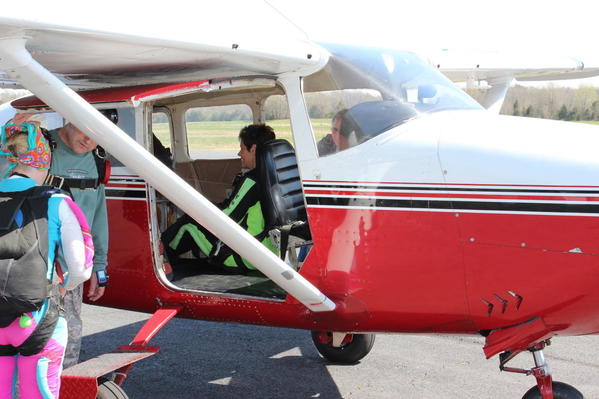
We circled and circled and circled as we climbed to the 10,000’ altitude for the jump. I looked out the windows and saw the fields and the Arkansas River below. Still no fear. Flying is fun.
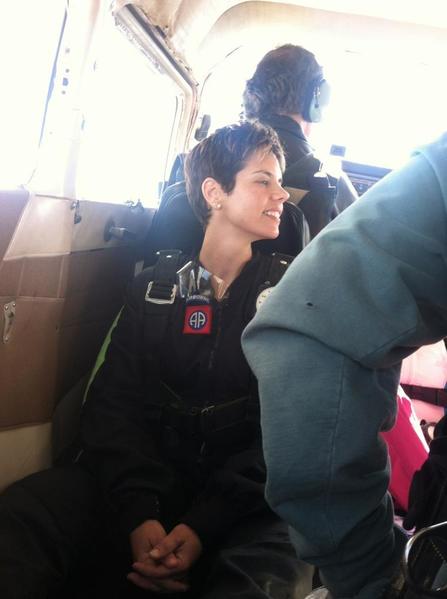 Above, climbing to 10,000 feet; below, just before the door opened...
Above, climbing to 10,000 feet; below, just before the door opened...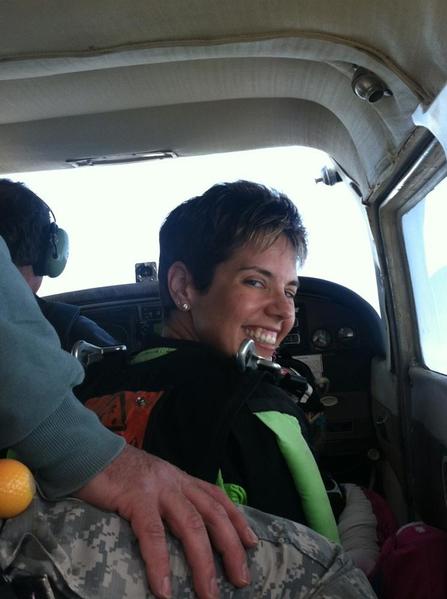
As we neared 10,000 feet, my instructor had me get into position and he hooked us together at 4 points (each shoulder and each hip). We waddled together on our knees towards the door of the airplane. Still no fear.
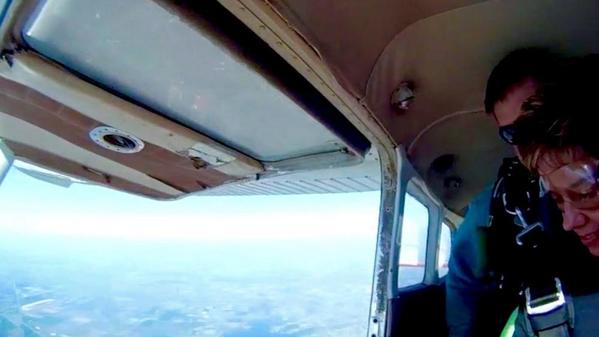
Then, the door opened and I looked down. Everything became very clear at that moment. Although I had never seen the movie or heard the quote, this exact thought ran through my mind: “Why in the hell am I about to jump out of this perfectly good airplane?”.
The Jump
Suddenly, my stomach went into my throat and my body turned to jello. This was happening now, and there wasn’t anything I could do to stop it. I heard the engine noise drop an octave as the motion of the propeller slowed.
I snapped into survival mode. I had to remember to do exactly what they told me, OR I WOULD DIE.
We scooted right up to the edge of the plane. I reached out for the sides of the plane and stuck my foot down on the slice of bread sized piece of metal they called a “step.” I heard my instructor laugh behind me - a deep belly laugh. Something was funny, but whatever it was I didn’t register.
My instructor grabbed my forehead so I’d look at his wife who was doing the videography, and who was casually hanging out on the wing strut.
Forward. Back. OH SHIT!
Forward! Tuck. Flip. Flip. Half a flip.
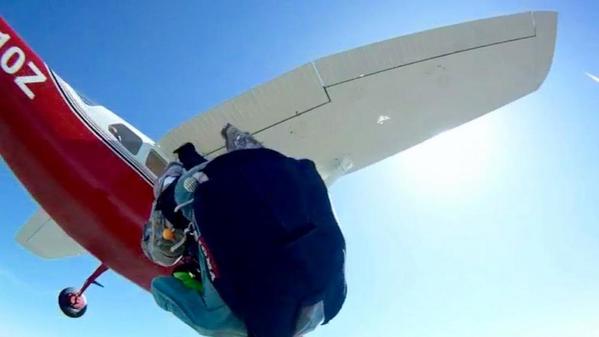
Our exit—Flip #1 (above); Before the chute deployed (below).
This is just as we righted ourselves after the 2.5 flips.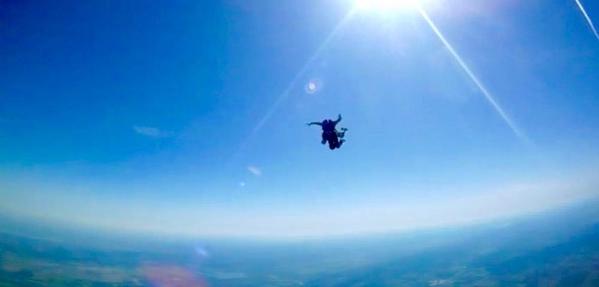
My instructor threw out his arms and legs to level out our flight. I was supposed to do the same, but I was no longer conscious of the man strapped to my back, nor did I see the videographer.
In fact, I was aware of nothing that required thought.
Some people say that in near-death situations they have their lives flash before their eyes. I did not, nor did I get tunnel vision. What happened to me was exactly the opposite.
The Bliss of No Mind
In an instant, I became hyper-aware of all of my senses. The greens, golds of the fields below us and the blue of the sky and the river became utterly vibrant. The colors I had seen when tripping on acid in the 9th grade paled miserably in comparison. It was as if I had been wearing dark sunglasses my whole life and they had suddenly been removed, allowing the true intensity of the pallete of the visible spectrum to radiate through me. Colors were no longer an observed characteristic, they were a phenomenon of energy to be experienced.
Simultaneously, I sensed the roar of the wind racing past my ears, threatening to tear out my stud earrings - the wild thrashing of our flight suits - the sweet, herbal smell of the fresh spring air - the wind with the force of a Category 3 hurricane pushing hard against my body as it fell at 125 mph - the metallic taste of fear in my mouth - all of it - at the same time - all of it, so intense that it defies the ability of language to convey the experience.
In that 32 seconds of free fall, there was no past, nor was there a future. There was only “right now.”
It was as if my mind no longer existed. There was no thinking. There was only experience and sensation. Although I was doing something terrifying, I experienced the purest form of bliss I have ever known.
Finally, I understood the expression of “having no mind.” Such a state really exists, but accessing it in our everyday lives is profoundly difficult. Short of having our wits scared out of us, it is nearly impossible to cause our minds to turn off.
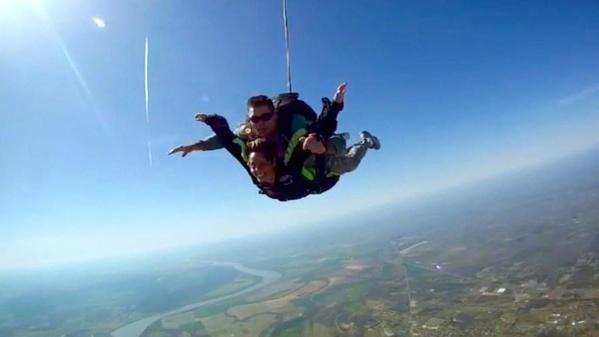
Free Fall—Experiencing the Bliss of "No Mind"
As part of my meditation class, we read a book called “My Stroke of Insight” by Jill Bolte Taylor, a neuroanatomist who had a massive hemorrhagic stroke on the left side of her brain. She knew what she was experiencing and recounts in great detail in the book about losing the function of her left brain, the part generally concerned with schedules, classification, number comprehension, and analysis. These functions are largely what comprise “the mind,” and due to the traumatic damage to her brain, she could no longer utilize these functions.
What she experienced was a state of bliss where she could no longer distinguish where she ended and where everything else began. She gave a fantastic TED Talk (https://www.ted.com/talks/jill..._insight?language=en) about her experience. When I read her book, I tried to imagine what it would be like in such a state, but it was really hard to do since I had never experienced it myself. During my free fall, I had that experience - or something very close to it.
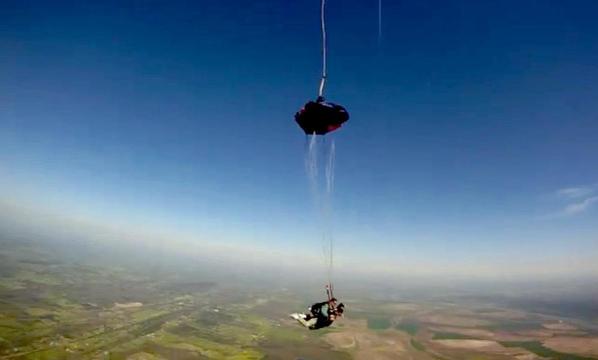
Deploying the Main Chute
Once the parachute deployed, I felt safe because I was gliding and no longer falling. My mind returned. I asked my instructor if we could do the big pendulum swings and he let me pull hard on the steering lines which swung us from side to side. I’ve no idea how many G’s we sustained in doing that maneuver, but it was intense - very much like riding a daredevil rollercoaster.
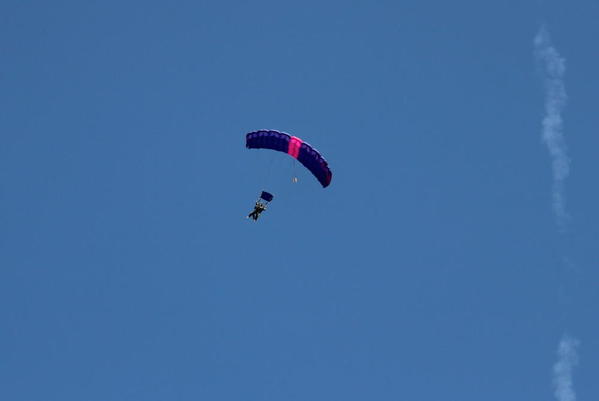
Swinging like a pendulum
Landing
When we came in for a landing, we touched down on our feet perfectly. Our chute fell behind us and then the high winds picked it up and tried to drag us as we did our best to pull it in. Others rushed to help gather it together.
My instructor unhooked us and asked me if I remember him laughing as we climbed out onto the tiny step before we jumped. I said no, that I had no idea. He told me that in all of the time he has been tandem jumping people, only a couple of times has he been pulled out of the plane by the person he was jumping - and apparently I was one of those people.
I laughed because I was in “I must do this exactly right or I will die” mode - and he weighed easily twice what I did. I thought he might be pulling my leg, but he told me to watch the video. Sure enough - I had done exactly that.
When his wife, the videographer who had landed a few moments before, caught up to us and asked me how I felt, I said that I felt “amazing.” The smile on my face went from one ear to the other and stayed that way for about half an hour.
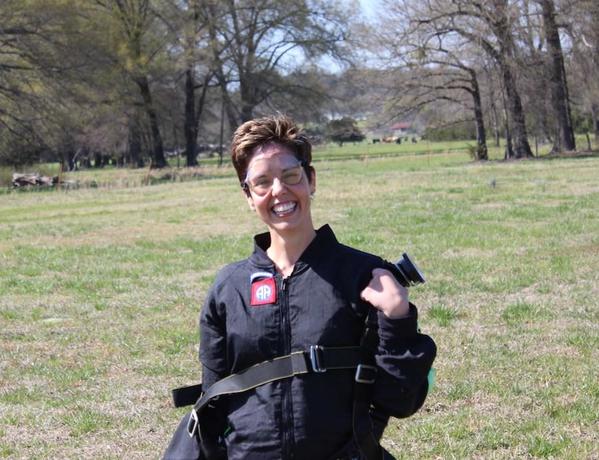
What a rush. I was still afraid of falling, but I would definitely be doing this again. A few months later I had that opportunity while on a trip to Texas.
Sadly, I did not have the same experience. There was no fear. I simply went up to the door and jumped. It was fun - don’t get me wrong, but it was not the same. This time, my mind was processing everything around me, analyzing it.
I guess I have to find something scarier than skydiving now to get back to the state of “no mind.” I’m taking suggestions.

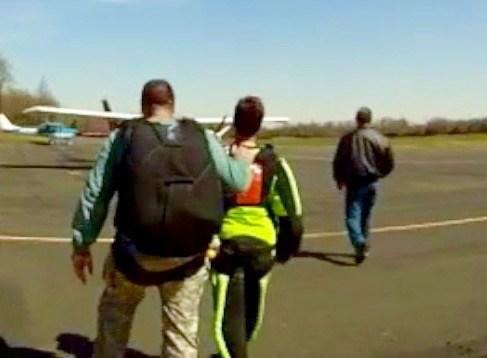
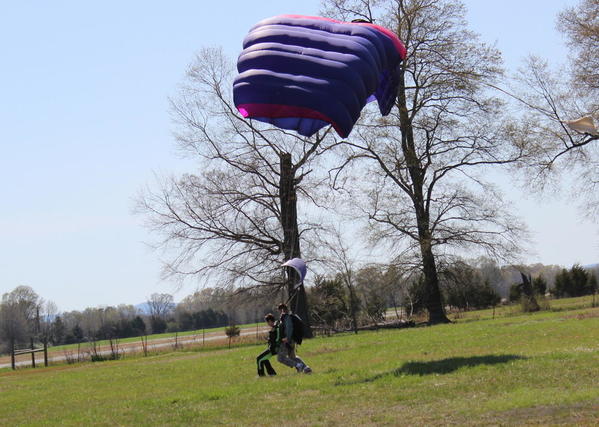
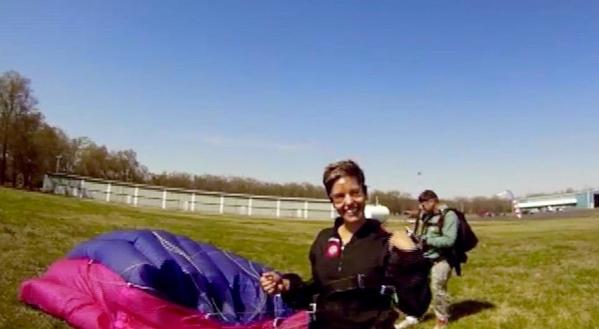
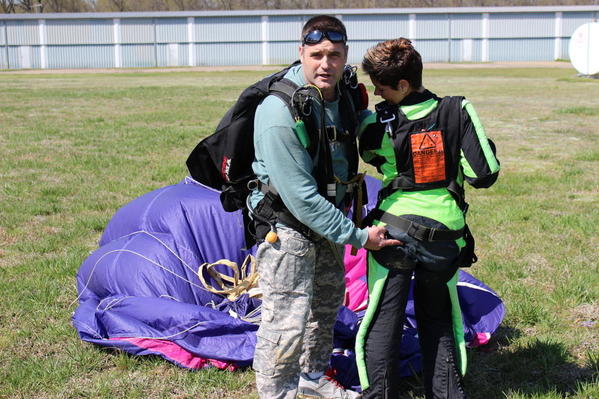






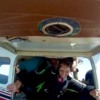

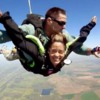




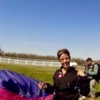




Comments (7)